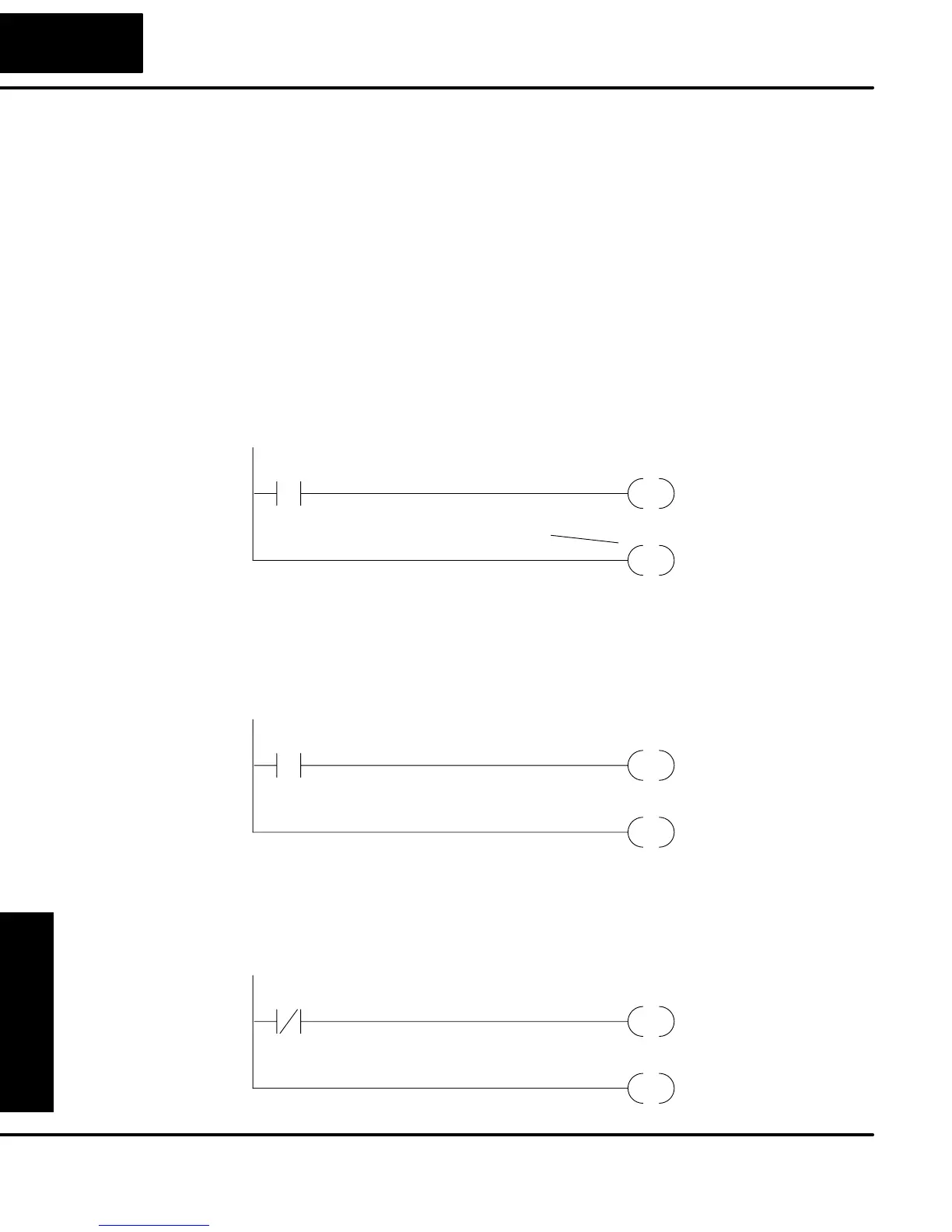Standard
RLL Instructions
5–4
Standard RLL Instructions
Boolean Instructions
Using Boolean Instructions
Do you ever wonder why so many PLC manufacturers always quote the scan time
for a 1K boolean program? Simple. Most all programs utilize many boolean
instructions. These are typically very simple instructions designed to join input and
output contacts in various series and parallel combinations. Since the DirectSOFT
package allows you to use graphic symbols to build the program, you don’t
absolutely have to know the mnemonics of the instructions. However, it may helpful
at some point, especially if you ever have to troubleshoot the program with a
Handheld Programmer.The following paragraphs show how these instructions are
used to build simple ladder programs.
All DL05 programs require an END statement as the last instruction. This tells the
CPU that this is the end of the program. Normally, any instructions placed after the
END statement will not be executed. There are exceptions to this such as interrupt
routines, etc. Chapter 5 discusses the instruction set in detail.
OUT
Y0X0
END
All programs must have
and END statement
You use a contact to start rungs that contain both contacts and coils. The boolean
instruction that does this is called a Store or, STR instruction. The output point is
represented by the Output or, OUT instruction. The following example shows how to
enter a single contact and a single output coil.
OUT
Y0X0
END
DirectSOFT Example Handheld Mnemonics
STR X0
OUT Y0
END
Normally closed contacts are also very common. This is accomplished with the
Store Not or, STRN instruction. The following example shows a simple rung with a
normally closed contact.
OUT
Y0X0
END
DirectSOFT Example Handheld Mnemonics
STRN X0
OUT Y0
END
END Statement
Simple Rungs
Normally Closed
Contact

